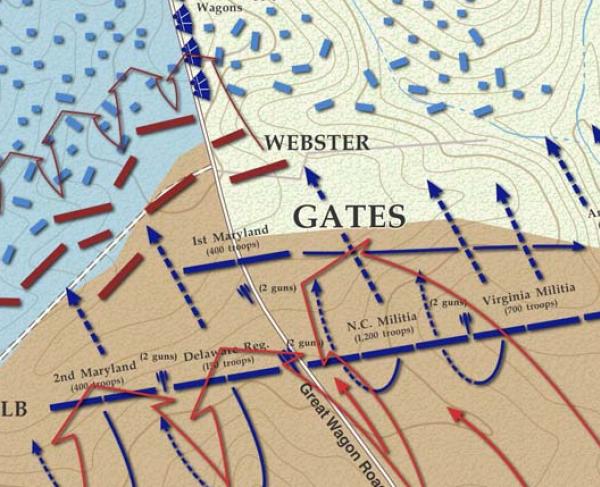
Saved: 308 Revolutionary Acres at Camden and Eutaw Springs
And we’re off! Generous supporters like you have already begun blazing the Liberty Trail by saving 308 acres of Revolutionary battleground in South Carolina. These 295 acres at Camden and 13 acres at Eutaw Springs are a critical first step toward our ultimate goal of securing 2,500 acres of hallowed ground associated with the Southern Campaign of the American Revolution — and telling the story of why this history is so significant.
The Legacy
Thank you for your dedication to battlefield preservation and American history education. In preserving these 308 acres of hallowed ground at Camden and Eutaw Springs , you have already done a service to the legacy of those who fought and died in these two critical battles.
But we can’t rest on our laurels. Between the acres that remain unprotected and the innovative educational tools we’re developing to tell the story of this pivotal chapter in the founding of our country, we’ve still got a long way to go.
In honoring our nation’s past, we help protect its future, ensuring that men and women for generations to come can learn from some of the best outdoor classrooms in the world. We look forward to continuing to blaze this Liberty Trail with you!
The History
Nowhere did the Revolution pit neighbor against neighbor and brother against brother more than in the Carolinas and Georgia, where British forces hoped to capitalize on the discord between American loyalists and Patriots. Intended to reinvigorate the war effort, the British army’s Southern Campaign culminated in their surrender at Yorktown in October of 1781.
Camden and Eutaw Springs were two pivotal battles on this pivotal journey toward American independence.
An outpost at Camden was established in 1780 by British commander Lord Charles Cornwallis to serve as an advanced supply base and platform for Royal troops looking to suppress rebellious colonists. American General Horatio Gates hoped to seize this important outpost and neutralize the British forces in the vicinity.
As dawn broke on August 16, 1780, Gates’s hungry, footsore Americans were shuddered alert by the tell-tale crack of a British Brown Bess musket. In front of them, 2,230 British regulars and loyalist militia stood ready to defend the Camden base. Believing he outnumbered the Redcoats two-to-one, Gates rashly chose to attack. In reality, his effective strength of roughly 3,000 weary Continentals was easily matched by the rested British veterans awaiting him. The Redcoats made quick work of inexperienced troops on Gates’s left flank. On the right, veteran Maryland and Delaware troops made a good show of resisting before they too bent under the weight of the Royal onslaught. When the battle was over, roughly 900 Continentals were dead or wounded and another 1,000 had become prisoners of war — one of the worst military disasters in American history.
Despite the devastating loss, the Patriots ultimately succeeded in driving the British from many of their backcountry outposts. In his quest to push the British back to the South Carolina coast, Major General Nathanael Greene departed his camp at the High Hills of Santee on August 23, 1781, and marched undetected more than 110 miles in sixteen days to confront British Lt. Colonel Alexander Stewart’s camp at Eutaw Springs.
On September 8, the battle started when Greene’s column surprised a British patrol and a foraging party at 6:00 am. The Patriots formed into three lines, with militia in front followed by the Continental troops and reserve troops. In a determined assault, the British were pushed back more than a mile. Stewart made a bayonet counter-attack, but Greene’s Continental troops stymied the British maneuver. The British dropped back to a strong defensive position along the banks of Eutaw Creek and in the citadel of a brick house. After five hours of intense fighting, Greene broke off the attack to move his troops back to fresh water and rest. He left Colonel Wade Hampton and his dragoons to hold the battlefield overnight.
Greene suffered more than 500 casualties, but the British losses were almost twice that number. Stewart and his British army retreated back to Moncks Corner and eventually to Charleston. The Continental Congress awarded Greene one of only seven gold medals given during the war for his exceptional victory at Eutaw Springs.


